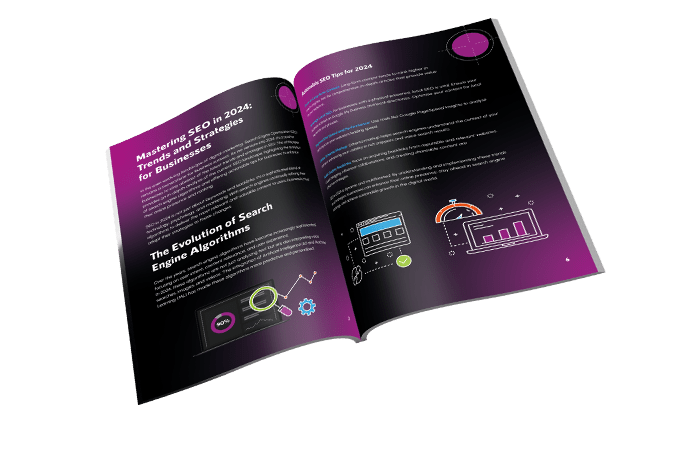News
An Easy Guide To Using Keywords For Search Engine Optimisation (SEO)
Keyword ranking is by far one of the most effective ways to get your content ranked higher on Google and help you achieve the conversions you want.
Like most factors in SEO, researching and implementing the best keywords will not guarantee overnight success – in fact, even the best keyword prominence and positioning can take up to six months to see any ranking on Google.
The great thing about keywords is that once you begin to understand them, it’s a pretty simple and cost-effective way to achieve your SEO goals.
Let’s take a closer look.
What are keywords?
Keywords are used to describe your website and its content. The goal of keywords is to summarise what your company offers and what your potential customers may be searching on Google to find your services. If you’re a baking business in Milton Keynes for example, your main keywords may be something as simple as ‘Milton Keynes bakery’. However, it’s important to note that the more common the keyword is, the higher the competition – which we will look at in further detail.
Understanding the competition
One of the easiest ways to research your keywords is simply to take a look at what keywords your competition is using! What terms do they use? Are they ranking well? This is a great starting point to see what keywords work best for your particular sector and to get an idea of which keywords may be tougher to rank for.
Google Search Console is a great free tool that can help you analyse your website. It shows you how your site is performing and even breaks down your traffic, so you can see what terms (or ‘queries’) users have searched to land on your page.
Google Trends (also free) is another useful tool to help you see what search terms are currently trending. You can search by country or area and find the most popular or rising queries related to your website.
Keyword competition
When it comes to keyword research, keyword competition is the main metric that will factor in how easy it is for your content or website to rank.
It’s all about finding the sweet spot – ideally, you want to use a keyword or search term that has a high search volume but low competition. You’ll often find, however, that the higher the search volume, the higher the competition. Therefore, less common keywords that are not searched as often will be easier to rank for.
The flipside of this is that the click rate is lower. Though the keyword is easier to rank for, overall, not that many people will be searching that term, meaning that, ultimately, not many users will visit your website.
There are plenty of paid tools that can help you with this, but they may be costly.
Learning the difference between keyword types
Main keywords – also known as pillar page keywords – are usually just one word long. They’re the ones that’ll drive traffic to your website and that you’ll use throughout your homepage.
If you’re writing a blog post, however, you’ll likely use one ‘focus’ keyphrase which doesn’t necessarily have to be just one word. You can use this multiple times throughout your content, based on your text length, and should always feature it in your blog title. You can also use a selection of secondary keywords which will feature less in your text but can still contribute to a higher Google ranking.
Long-tail keywords are longer in length but are much more specific. They are usually related to queries like ‘best SEO agency in Milton Keynes’ and may have a lower search volume – but they have a high conversion rate. This is because you’re answering readers’ specific questions or queries.
Tools like Yoast are a great starting point when learning main keyword and secondary keyword density, but it shouldn’t be relied on as your main source of SEO analysis.
Write for humans – not Google
It’s very tempting to ‘keyword stuff’ or use as many keywords as possible in your content, but this may actually result in your website being penalised by Google. When it comes to creating content, you should take time to do your keyword research and ensure you choose keywords that are actually related to your content.
When spreading your keywords out, make sure the text makes sense to a reader. It may be worth cutting down on your keywords to improve readability.
For example:
123 Internet is the best digital marketing agency in Milton Keynes with SEO, marketing, digital, and social services across Milton Keynes and this agency has won multiple awards as a top digital marketing agency in Milton Keynes.
The above text may use lots of keywords, but it lacks readability, is repetitive and is almost trying too hard for a higher rank, with too many keywords.
Instead, try a different writing style, such as:
123 Internet Group is one of the most established full-service digital marketing agencies in their area with over 15 years of trading experience and a team of 30 talented employees.
Providing award-winning web design, social media, SEO and digital marketing services all in-house to more than 600 clients, locally, nationally and internationally.
This reads a lot nicer and includes multiple keywords in a more natural way. This is the perfect example of writing for humans above Google, with keywords that will likely still rank on Google anyway.
Use keywords elsewhere
You can also use your chosen keywords across social media, in image file names and alt descriptions too. By doing this, you have a higher chance of ranking and by using keywords across social media, you can grow trust with your audience and improve your SEO ranking signals.
Create a blog
Writing blog posts is an excellent way to improve your ranking for a variety of different keywords, depending on your topic. While you’ll have a set collection of main keywords used across your website, having a blog means you can rank for a whole variety of new keywords per blog post. Blog posts are also another way to drive traffic, show your expertise, establish trust, and grow backlinks.
Bonus tip: Consider misspelt keywords
Obviously, this will depend on your sector and how acceptable it will be to use misspelt words within your copy, but once you have more experience with using keywords, you’ll soon find that optimising for misspelt keywords is a nifty hack.
The competition for misspelt keywords is significantly low, making them easy to rank for. Try using words that are often misspelt – such as morgage instead of mortgage – and if you can’t face using bad grammar across your website, try dropping them into alt text or image names.
Of course, keywords are a large part of SEO, but they’re still just one part of SEO. Ideally, you should be using keyword optimisation alongside other SEO hacks like writing evergreen content, earning backlinks and having a page with a great user experience.





The Ultimate Social Media Guide
With the ever-growing power of social media, we use the latest techniques, video, and animation software to craft eye-catching social media assets that make your brand pop. Our designers, wielding Adobe Creative tools, create distinctive animations and graphics to illuminate your brand story and highlight your products or services. Want a unique design? No problem – we also offer bespoke designs to match your brand aesthetic.